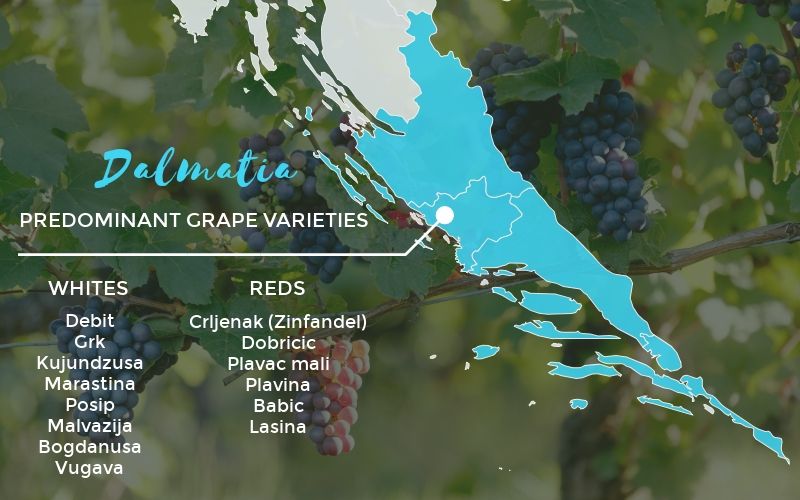January 4, 2019 — In the second article of the Croatian Wine Regions series, TCN unveils Dalmatia, Croatia’s southernmost region.
Archaeological evidence and grapevine seeds found in 1986 at an early-Illyrian gravesite in Površje near Zadar suggest that viticulture had been present in the region as early as 3,800 years ago. In fact, the entire history of Dalmatia is heavily linked to winegrowing as that was one of the key pillars of the region’s economy.
However, the real development of viticulture started with the Greek colonies and their city-state settlements on the Adriatic. Back then, the polis of Issa on today’s island of Vis as well as the polis of Pharos on today’s Hvar were both already well-known for producing top-quality wines. Greek legacy in Dalmatia was later continued by the Romans who conquered the Illyrians and brought winemaking in the region to an enviable level.
What followed were centuries of political and economic turmoil, including several major agriculture crises, but fast forward to 21st century, the modern-day Dalmatia is once again producing top-quality wines and is mostly focused on championing the region’s native varieties.

Dalmatia is today probably most known for being the homeland of the world-famous Zinfandel. Not so long ago, this robust red was in America considered to be native to California and recognized as a close relative to the Italian Primitivo, but as it turns out, both varieties are in fact genetically identical to an ancient Dalmatian variety called Kaštelanski crljenak (aka Tribidrag; Pribidrag), which was in 2002 confirmed by a DNA analysis.
But if they’re all identical — you may ask — how can we know which variety is the ancestor? Well, the first written mention of the name Primitivo dates back to the year 1799, and Zinfandel was first mentioned in 1837, whereas the name Tribidrag dates back to the 15th century.
Etymologically, the word tribidrag is of Greek origin and roughly translates to “early maturation,” just as the Italian name for this variety has its roots in Latin primativus, meaning the same — the first to ripen. On the other hand, the etymological origin of zinfandel remains a mystery.
It was also discovered that Crljenak and Dobričić were the parents of Plavac mali, one of Dalmatia’s most widespread reds found mostly on the Pelješac peninsula and the islands of Brač, Hvar, Korčula, and Vis. This variety is particularly prized for its sturdiness and resistance to disease, so much so that the Dalmatians have an old saying that goes: “Praise every variety but plant Plavac mali.”
Other notable Dalmatian red varieties include Plavina, Lasina, and Babić. The latter accounts for only about 1% of the production in Croatia, and the best site for this Dalmatian red is the UNESCO-listed Bucavac vineyard near Primošten.
As for the whites, Debit of Šibenik area is currently going through a renaissance and is gaining more and more recognition, but the king of Dalmatian white varieties is still Pošip, bar none. This is also the first Croatian variety with a protected geographical origin. Its natural habitat is the island of Korčula where Pošip originated through natural selection as a spontaneous crossbreed between two pre-domesticated vines, Bratkovina and Blatska zlatarica. Other notable Korčula varieties include Grk, Cetinka, and Maraština which is also widespread in other parts of Dalmatia.
Dubrovnik is most known for its Malvasia, though unlike the Istrian indigenous variety, Dubrovačka malvazija is in fact genetically identical to several Italian and Spanish varieties.
Stay tuned for more on Croatian wine regions by following TCN’s dedicated gourmet page.











